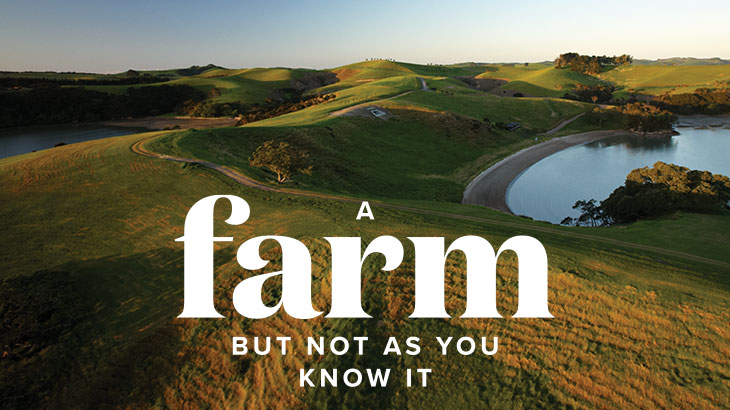A farm but not as you know it
A farm but not as you know it
While owning a farm is an unattainable pipe dream for many, Living on a block of land within a working farm is a viable option thanks to the farm park model.
There are undeniable benefits for farm owners and those buying within planned farm park communities – and some challenges, too, mainly around council due-process and covenants which dictate design and activity.
Generally, there‘s an official “change in land use” required to enable larger tracts of farmland to be parcelled up into lifestyle sections and getting councils to re-classify land is the hardest part, according to John Greenwood of Bayleys’ special projects team.
“When the farm park model started in New Zealand, developments were largely proposed for coastal land which tends to be less-productive and less-fertile than inland areas, thanks to salt and wind,” he explains.
“Residential waterfront land has far more value than purely rural farm land.
“If we look at dollar values, 100 hectares of rural waterfront land is worth about the same as two hectares of residential waterfront land – so there is asset value to be unlocked by landowners.”
Greenwood says this land diversification trend is typified by a forerunner of the farm park model – the 125-hectare Headland Farm Park at Manganese Point in Northland, where by the early 1990s, 82 freehold home sites with portions of common ownership land and amenities, were sold.
Mataka Station, Wiroa Station and The Landing on the Purerua Peninsula northeast of Kerikeri; Omarino in the Bay of Islands, and Breamtail at Mangawhai Heads, are subsequent flagship examples of this concept – albeit, at the upper end of the market.
“These premiere coastal subdivisions have seen large tracts of land covenanted for the protection of those buying into them, thus underpinning the long-term environmental and amenity value of these assets,” says Greenwood.
“Owners within these communities have access to communal amenities such as boat ramps and sheds, recreational pavilions, tennis courts and walking tracks – so they’re purchasing more than just land and a house site.
“The consent processes that have enabled these developments to proceed have been rigorous, conservation areas have been carefully preserved and the design protocols for built forms exceedingly strict.”
Read more...
[Download PDF]